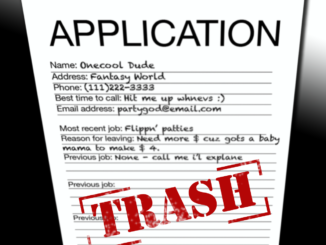- Up to 15 mph – Breezy to New Mexico folks, winds in this range will kick up dirt, mess up your hair and blow a term paper out of your hand but are otherwise harmless.
- Between 15-35 mph – Yep, it’s windy. In this range, vegetation – tumbleweeds, small shrubbery and trees – and other relatively lightweight items go on the move. Motorists driving large vehicles may have a difficult time fighting the wind on highways, Hergert said, and drivers should give larger vehicles more room and time to maneuver.
- From 35-74 mph – The wind speeds of a tropical storm, these are days you don’t go outside. Strong winds – especially gusts that hit hard and suddenly – can rip limbs from trees, trees and buildings with weak foundations or roots can be leveled, car doors are ripped open, billboards and roof sections blow off and anything not tied down will travel. Low-visibility, blowing debris and difficulty controlling vehicles make driving dangerous.
Survival guide – There really is no way to get around the wind, especially when class is on the other side of campus, but there are a few things that can keep it from completely ruining your day.
- Bad hair days – Don’t even bother styling if you can hear wind outside your windows. Ponytails will help with mild wind but for really windy days, twists, buns and braids are the only way to go. Forget the hat unless you’re ready to watch it bounce down the sidewalk. Opt for a knit cap or hoodie instead, especially with medium to short hair.
- Congestion, headaches and dry, itchy eyes – Full of dirt, dust and pollen, even low winds can destroy the sinuses and kick off allergies. Consider a daily-dose allergy medication, like Claritin or Allegra or go for a low-level, non-drowsy decongestant and acetaminophen combo. Nasal sprays, eye drops and a humidifier at night can also help, but if all else fails, it’s time for a trip to the doctor to get other options.
- Cover, shield and protect – Even if the skies are dark, wear sunglasses or other lenses to protect the eyes. Grains of dirt can scratch and irritate eyes and make navigating the wind both painful and difficult. Pull the drawstring on your hoodie and tie to help shield the face or wrap a light scarf around the face to keep dirt and allergens out of the mouth and nose.
- Lighten the load – Expect a fight from doors and anything you try to carry in your hands or arms. Instead, cinch everything you have to carry into a backpack and keep your hands free. Also, remember that virtual stuff doesn’t blow away. Upload notes, papers and other materials to the cloud storage area of your school email account (OneDrive) and retrieve on your phone or print when you get where you’re going.
- Choose your route – Cut through buildings to reduce time in the wind and choose routes between buildings, trees and other vertical barriers to help block the wind. Allow extra time to get places and be sure to give yourself a minute to compose yourself and fix your hair when you arrive.



